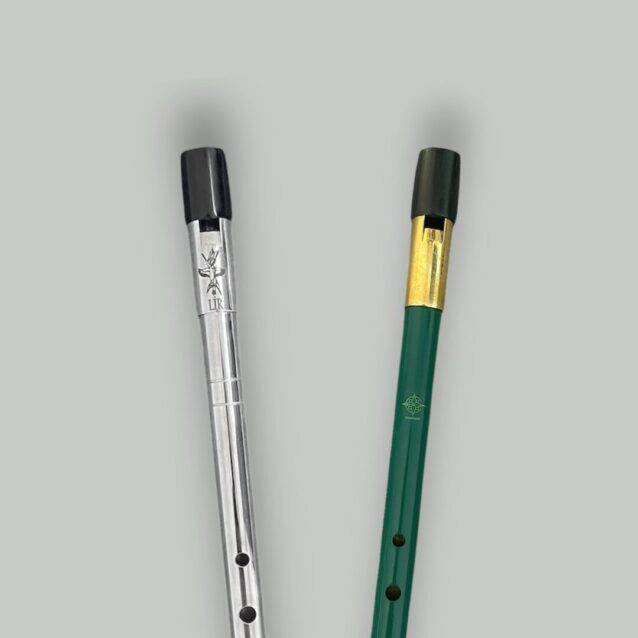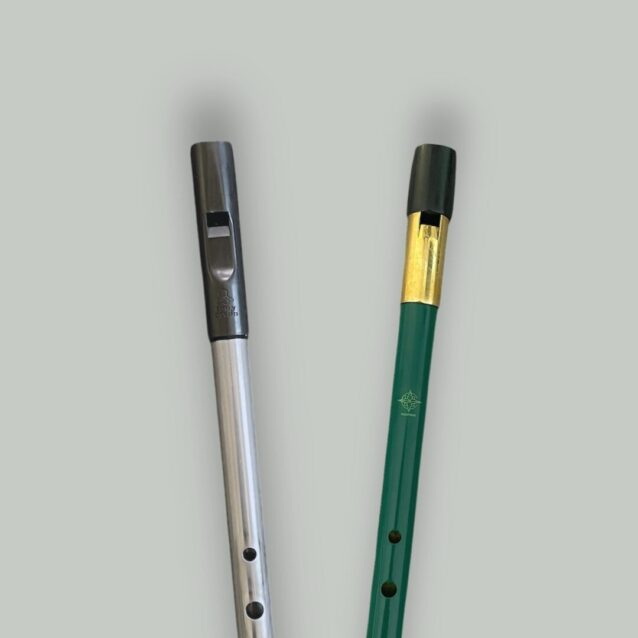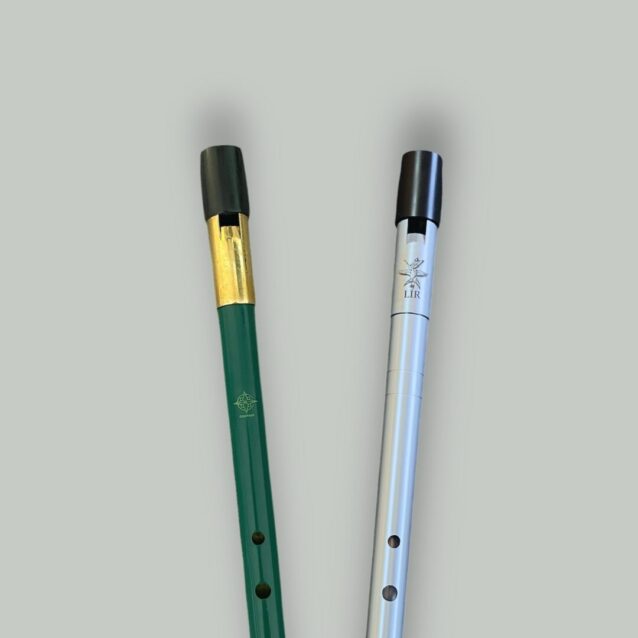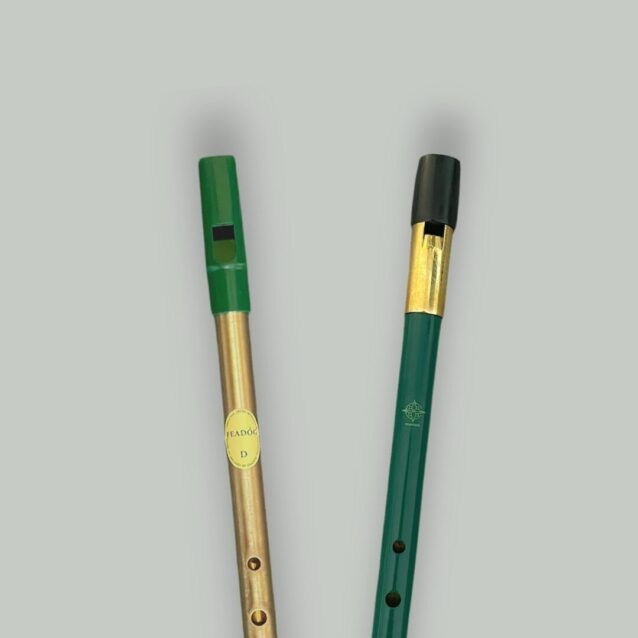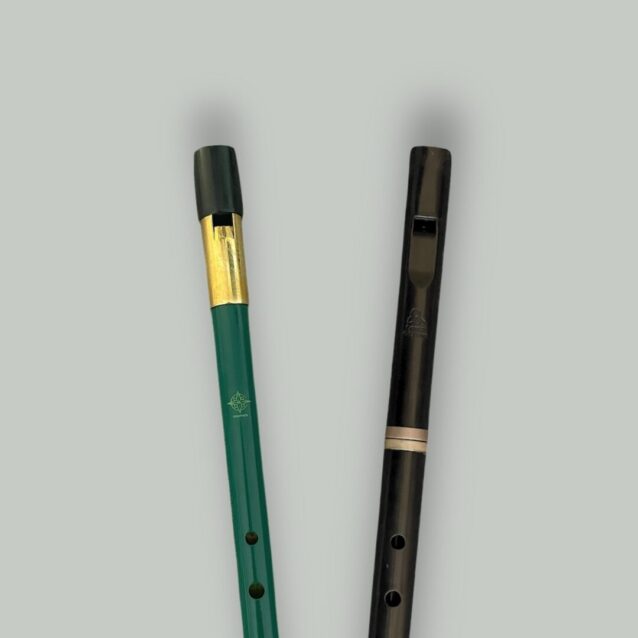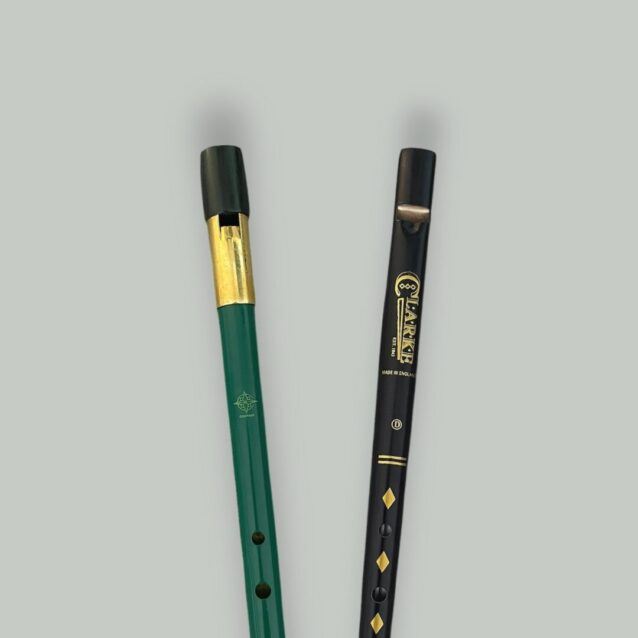The Compass whistle is a relatively new arrival on the scene, first appearing in 2025. Built in Sheffield, UK, it comes from the same makers behind the Shush brand, a team that has already proven themselves in the market, continuing the tradition of quality craftsmanship. In this review, we’ll take a closer look at how it performs and what makes it stand out.
Design & build
| Model: | Compass |
|---|---|
| Key: | D (high/soprano) |
| Material: | Brass (painted) |
| Mouthpiece: | Delrin |
| Windway type: | Curved |
| Length: | 291mm (11.45″) |
| Weight: | 103g (3.63oz) |
| Bore diameter: | 12mm (~ 0.47″ or 15/32″) |
| Tuneable: | Yes |
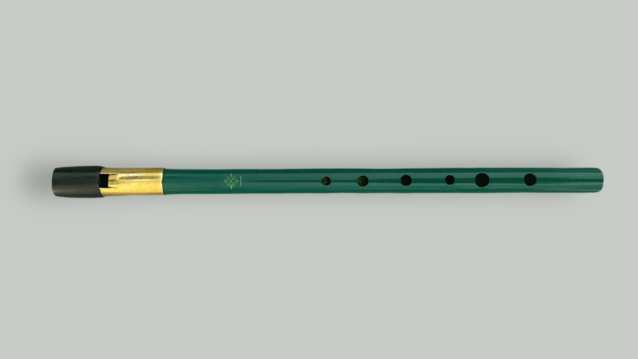
At first glance, the Compass whistle follows a construction style that’s already well established on the market, very much in the vein of the iconic Sindt design, and comparable to models like the Lir or McNeela Wild. At its core, this is a brass whistle, but with a colored finish.
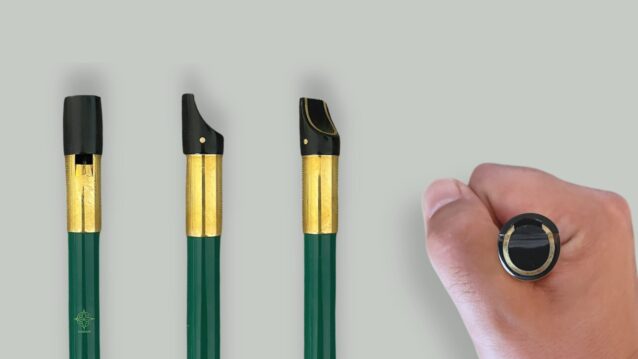
What makes Compass stand out is the variety of finishes they offer: brass, copper, chrome, green, and black gloss. For this review, we specifically tested the green finish variant, though it’s worth pointing out that the finish has no effect on the sound — it’s purely an aesthetic choice depending on what look you prefer.
The mouthpiece is made of Delrin with a curved windway, and the whistle is tuneable by default. The front features an engraved Compass logo.
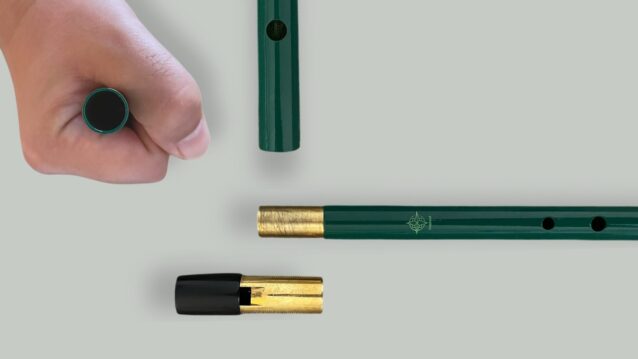
The bore diameter is standard for a high D whistle, on the “narrow side”. However, the wall thickness is greater than on entry-level models like the Generation or Feadóg, which makes the outer diameter wider. This added wall thickness also gives it extra weight, putting it among the heavier whistles. Not necessarily a good or bad thing, but it’s something to keep in mind if weight is an important factor for you.
Compass – Sound samples and demonstration
The video below features samples from both octaves, starting with slower melodic phrases and then moving into faster tunes to show how the Compass whistle responds in different playing contexts.
As you can hear in the recordings, the Compass whistle has a clean tone with a slightly warm, sweet character and just a hint of chiff. The consistency of tone between the two octaves is excellent, making it equally pleasant for slow airs and ballads as well as faster dance tunes.
The volume sits on the average side, well balanced across the octaves, with the lower notes never getting too quiet.
Intonation is solid, and the C natural comes out correctly with the common “OXXOOO” fingering.
How it handles from a player’s perspective
The first impression is that the Compass whistle is a joy to play. It’s an easy blower, but also forgiving when overblown — the tone doesn’t crack easily, which is especially helpful for beginners. The notes respond quickly, and moving between the lower and upper octave feels smooth and effortless.
At the same time, it offers enough backpressure for more advanced players who like to play with dynamics. The tone doesn’t shift dramatically depending on breath strength, though when pushed harder it can add a bit of “bite”, but without breaking.
This whistle is practically on par in quality with the Lir Silver and similar models in that range, so if you’re deciding between the two it really comes down to aesthetics. One possible advantage of the Compass is that, despite the glossy coating, it doesn’t feel slippery in the hands.
Your thoughts?
Have any questions or impressions about the Compass whistle? Feel free to drop a comment under the Compass tin whistle review video on YouTube. We check in regularly and are always happy to chat, answer questions, or hear your experience with the whistle!
Compass whistle sound comparisons
Below are a few quick sound comparisons between the Compass and other tin whistles. Each clip is recorded using the same microphone and settings to give a fair impression of tone and character, with raw, unprocessed sound.
View more Compass whistle comparisons
Please note: due to YouTube’s automatic audio normalization, real volume differences between whistles are effectively removed. That’s actually helpful in this case — since louder sounds are often perceived as better to the human ear on a subconscious level, this allows you to focus more objectively on tone, texture, and response.
Where to buy this whistle
If you’re interested in picking up this whistle, here are a few trusted places where you can find it. Prices typically range around $100, depending on the shop, region, and packaging type.
- Compass Music (UK, ships worldwide)
- BigWhistle (UK, ships worldwide)

